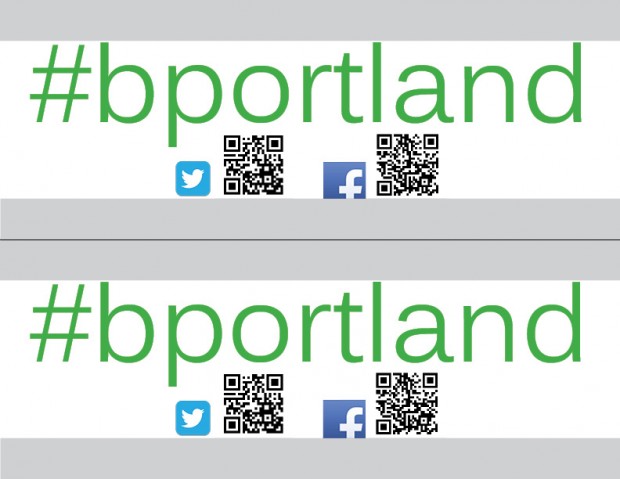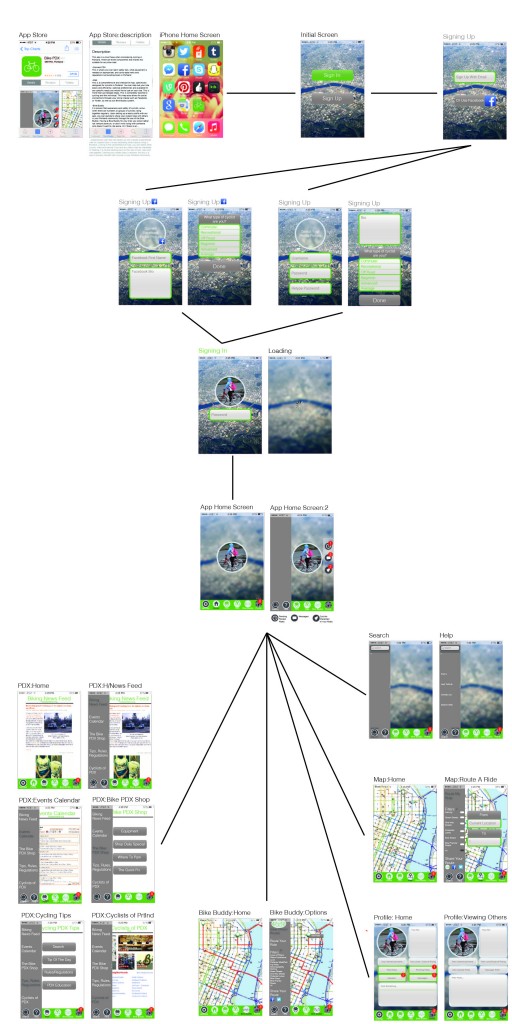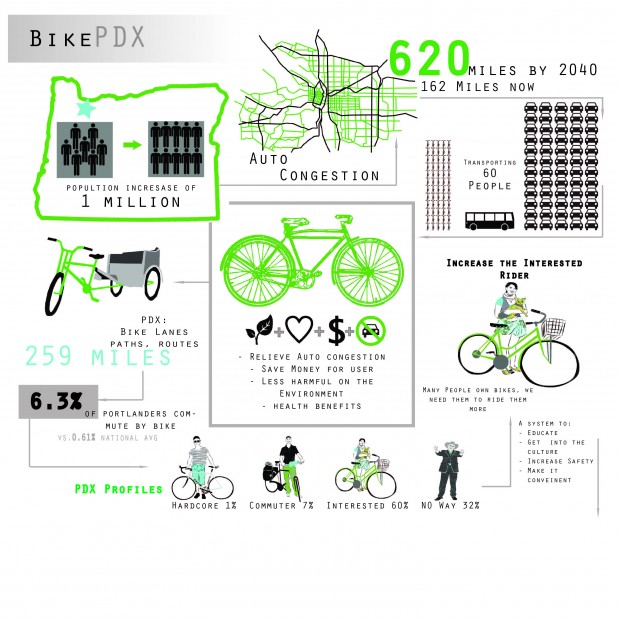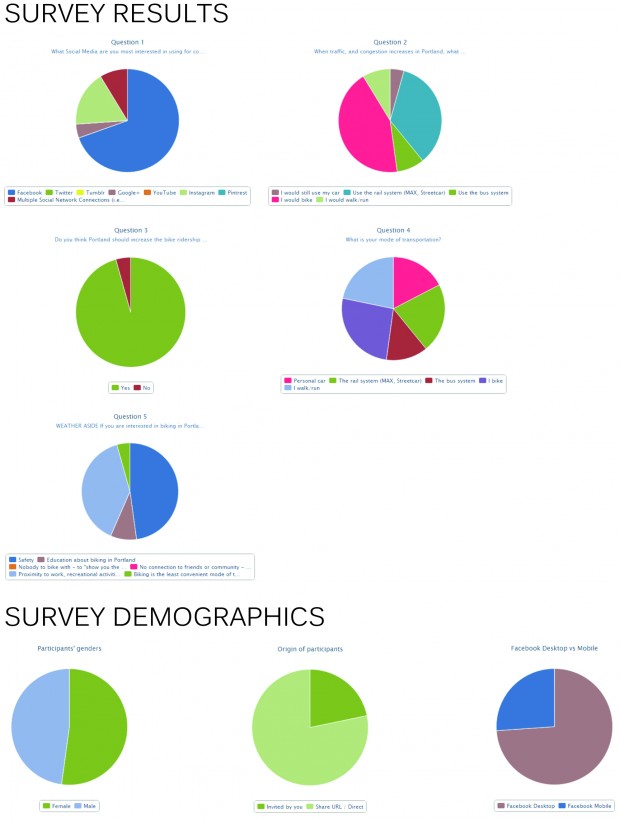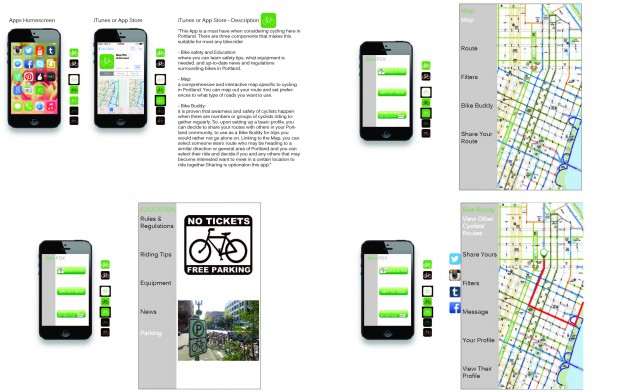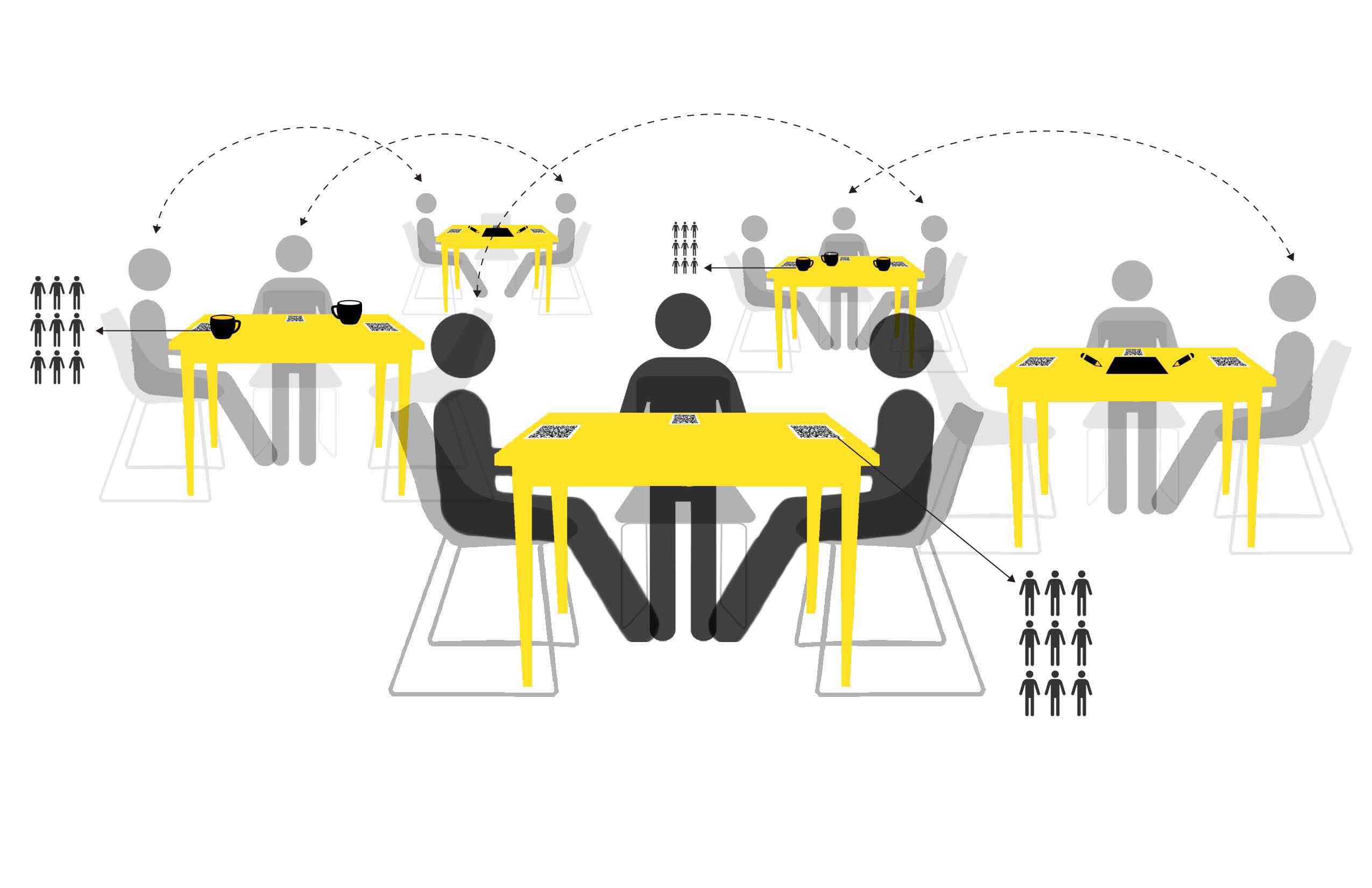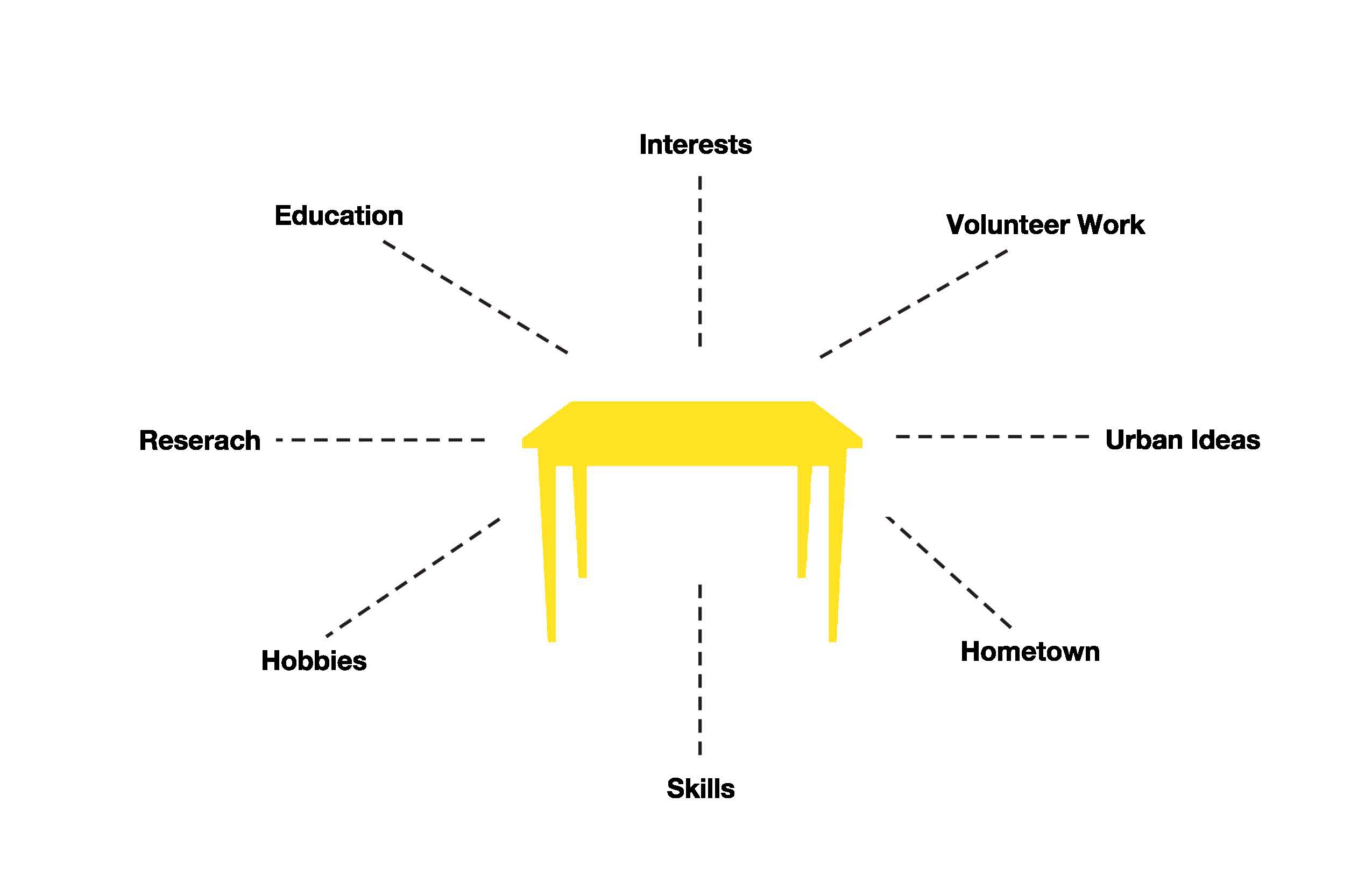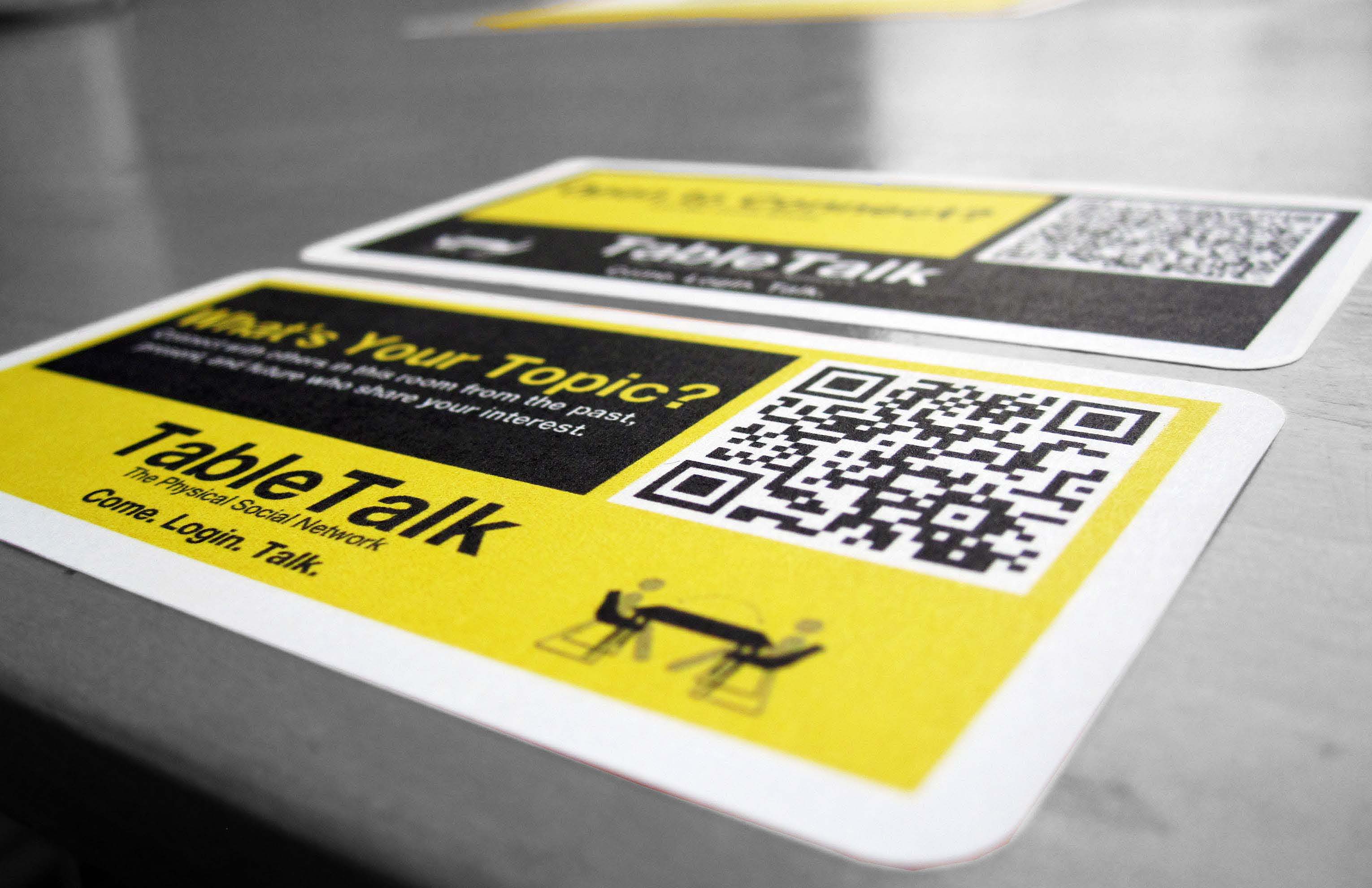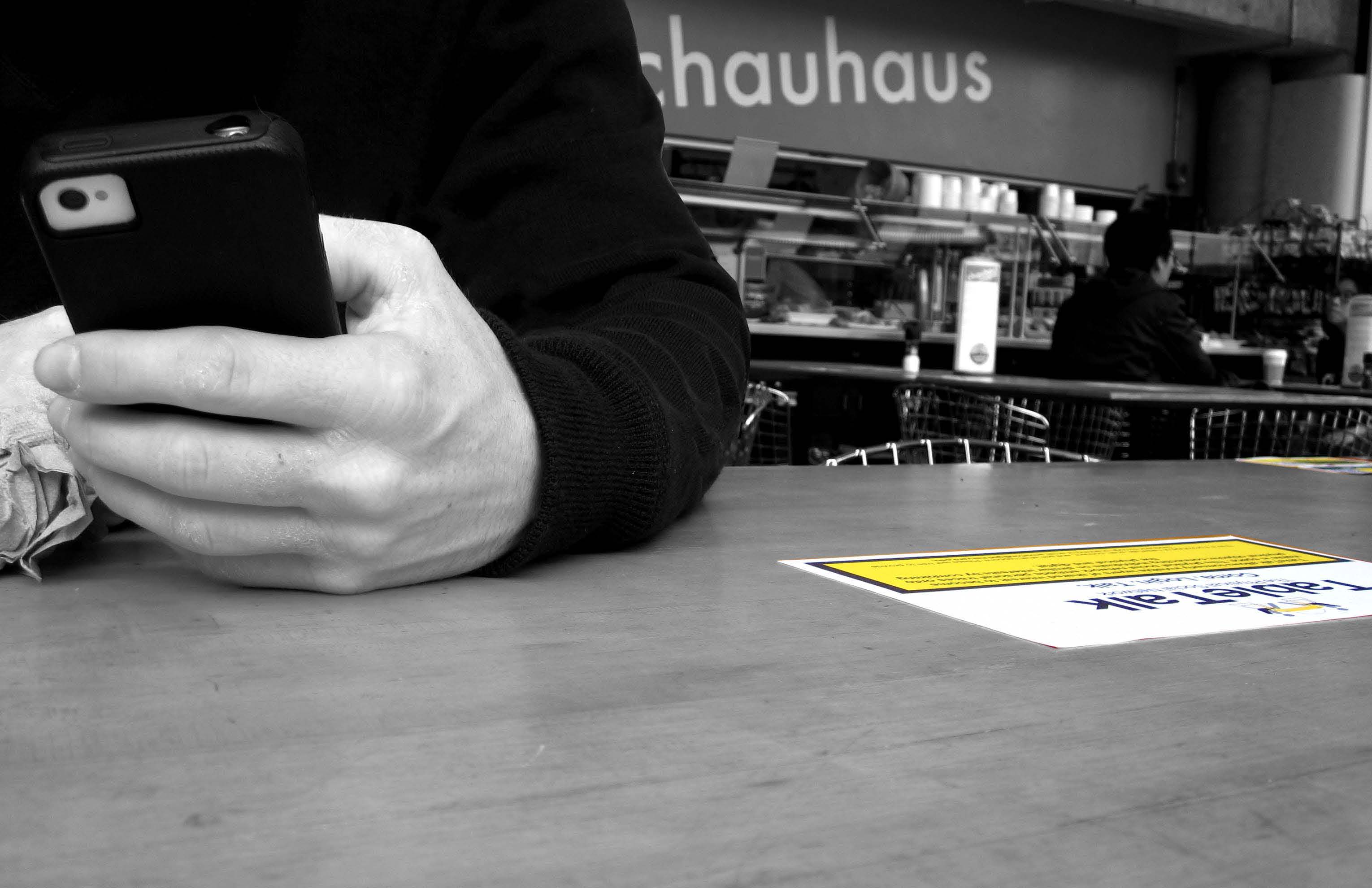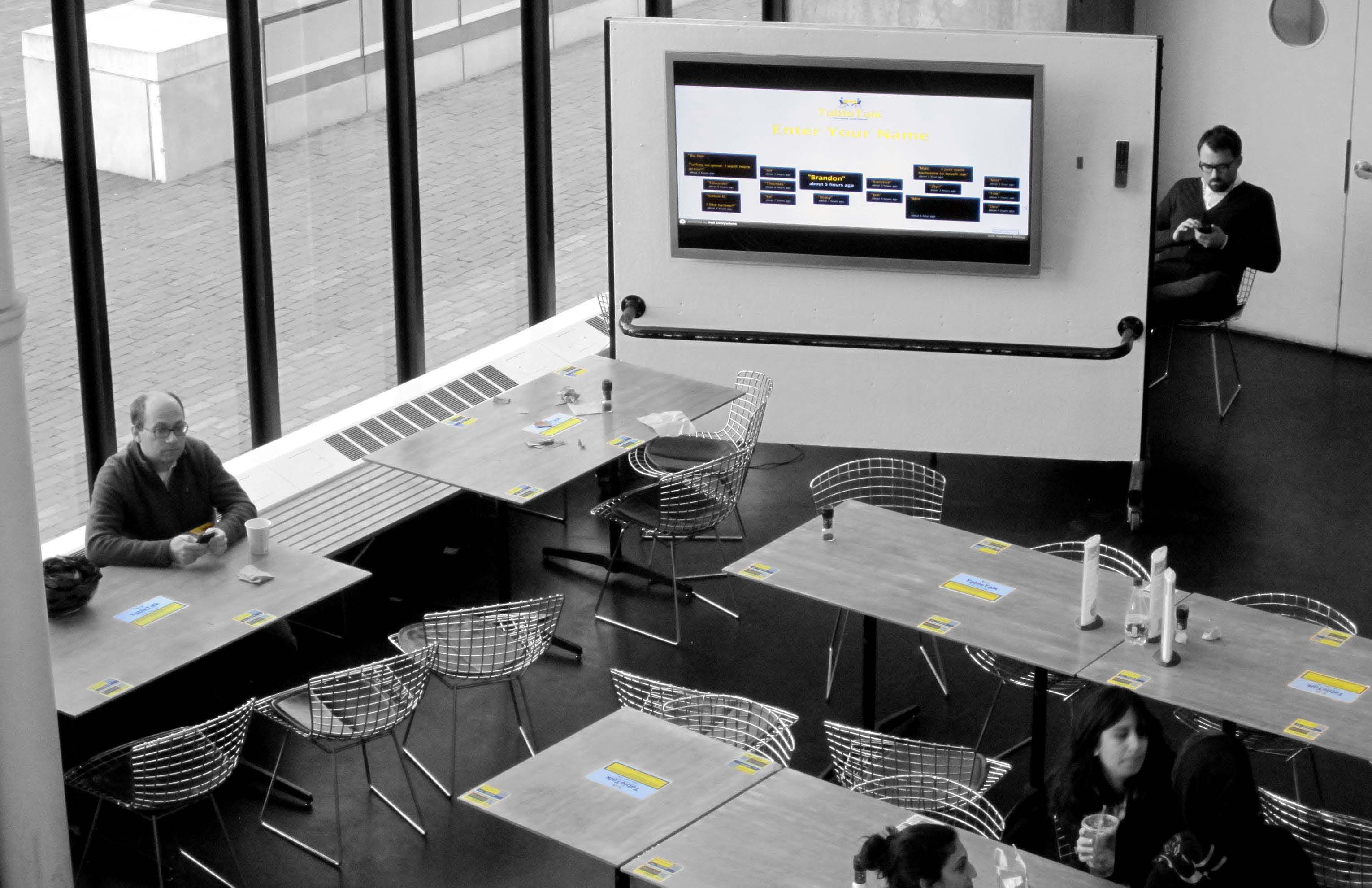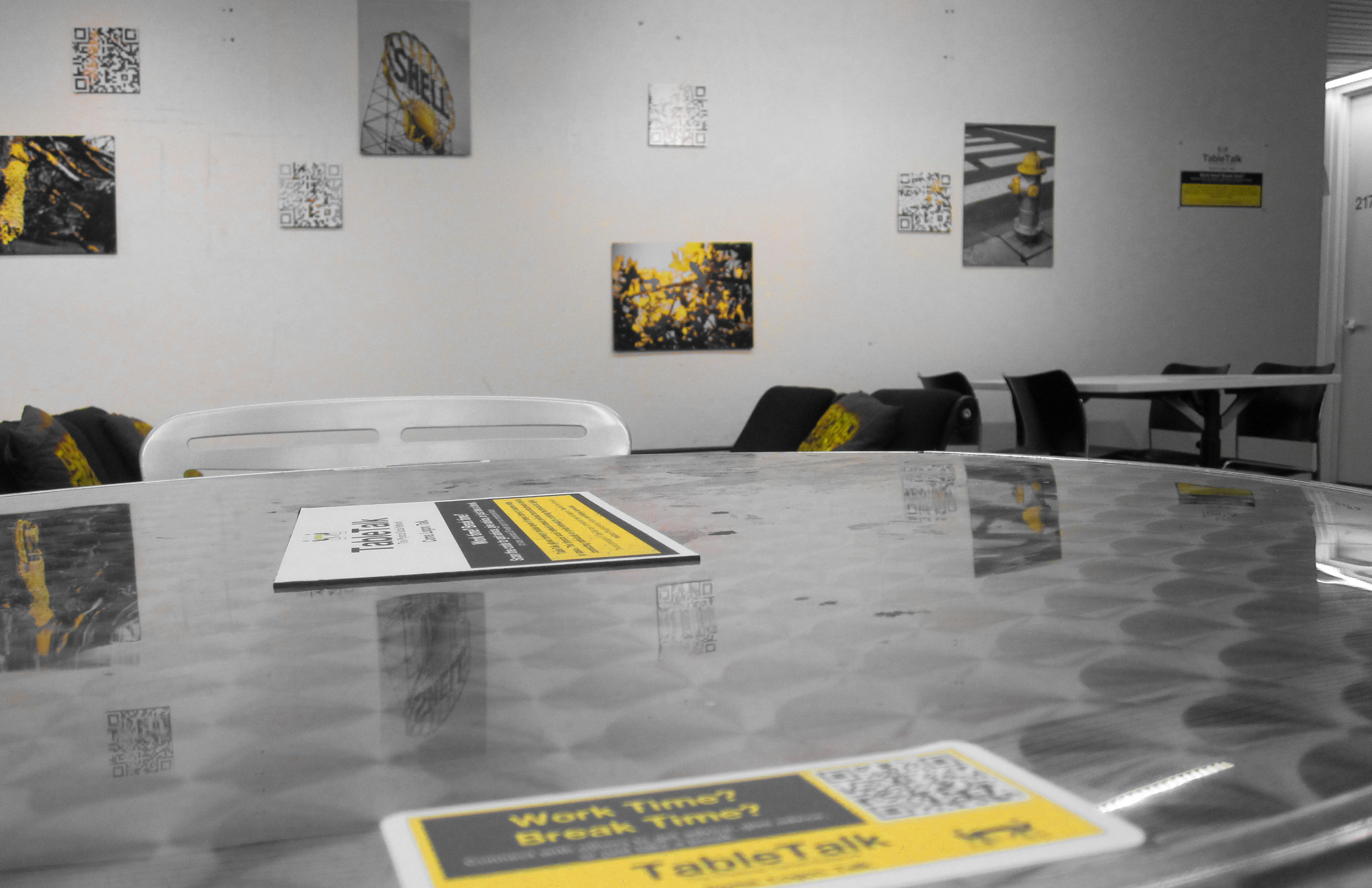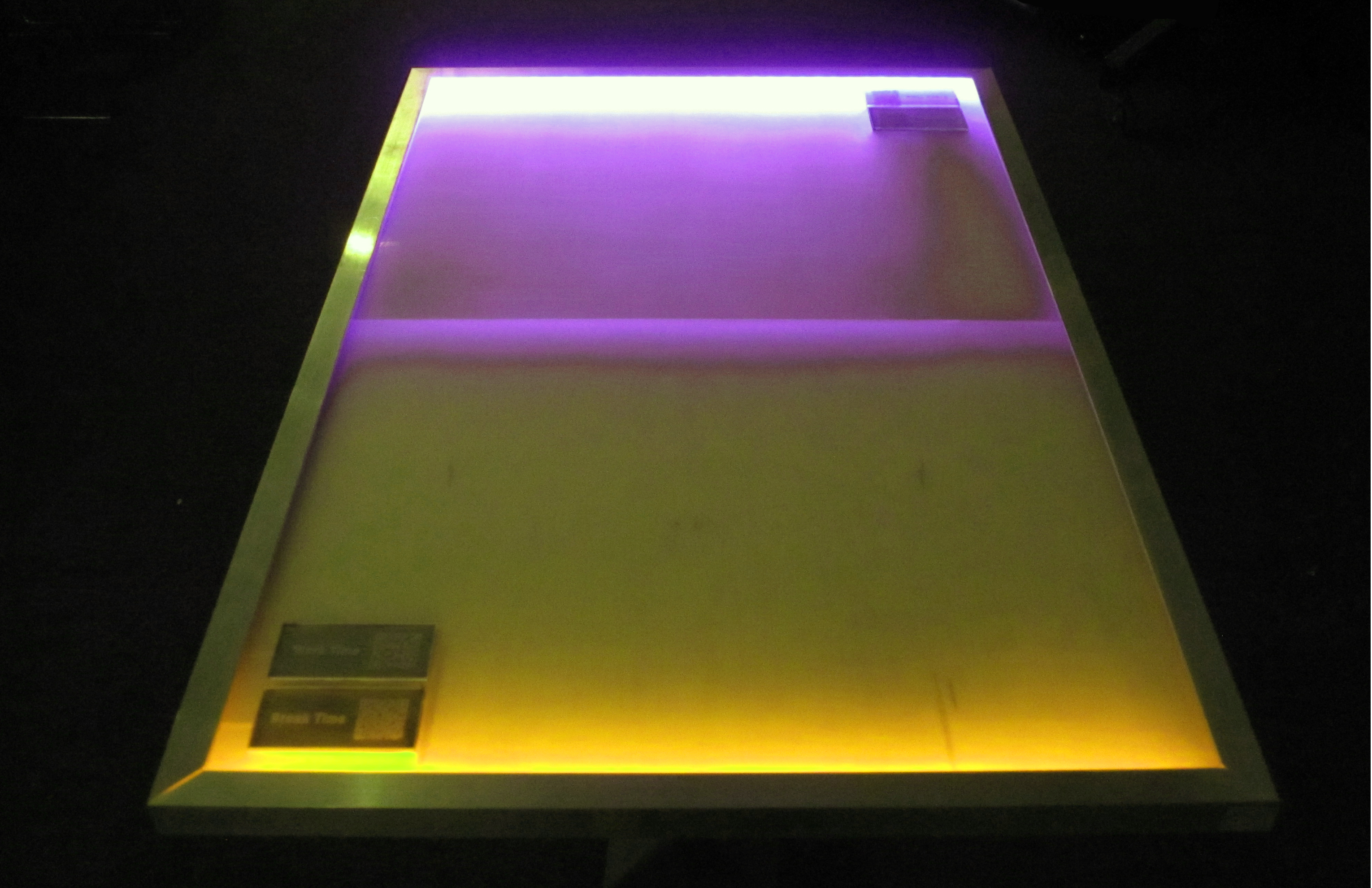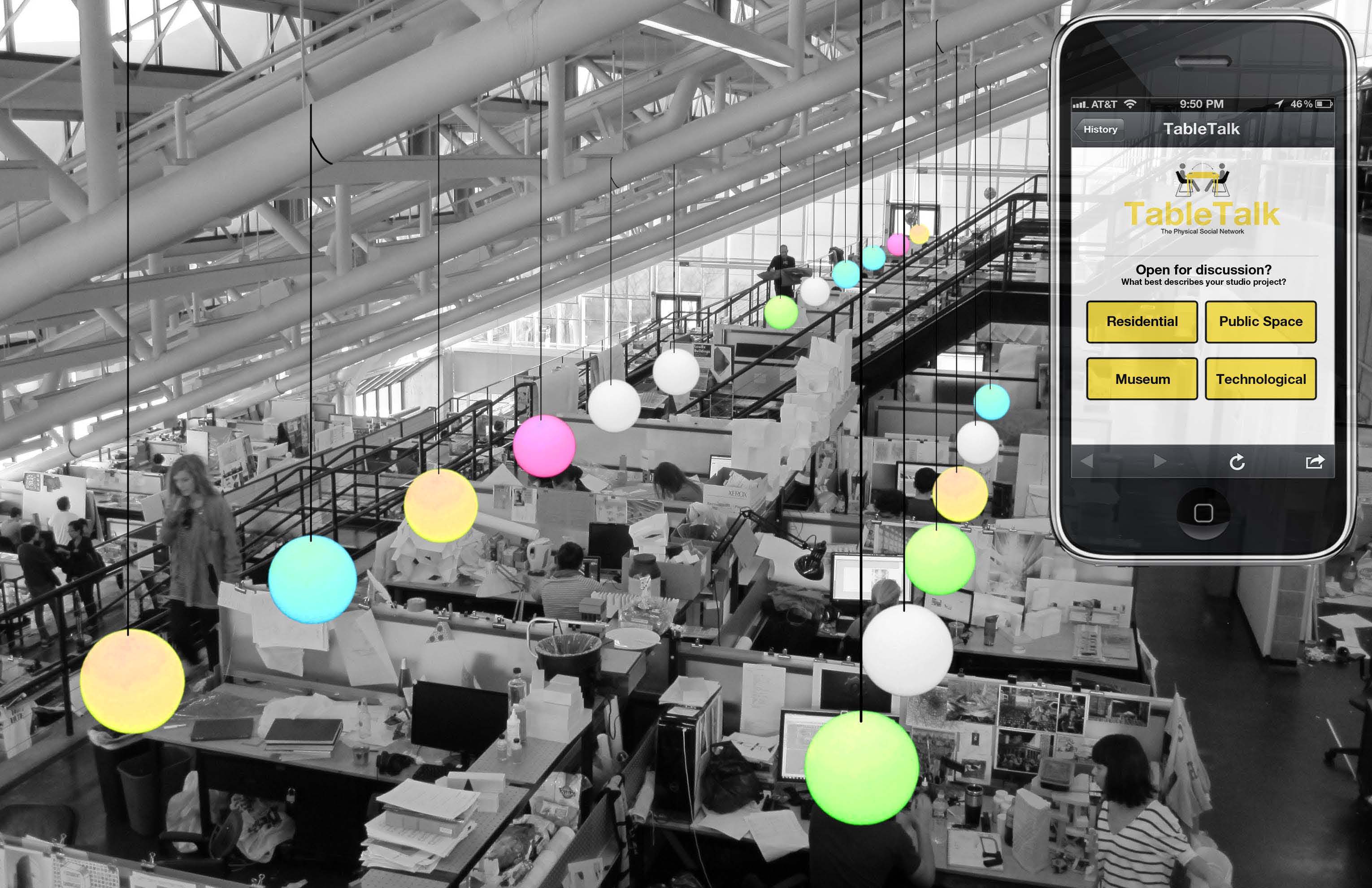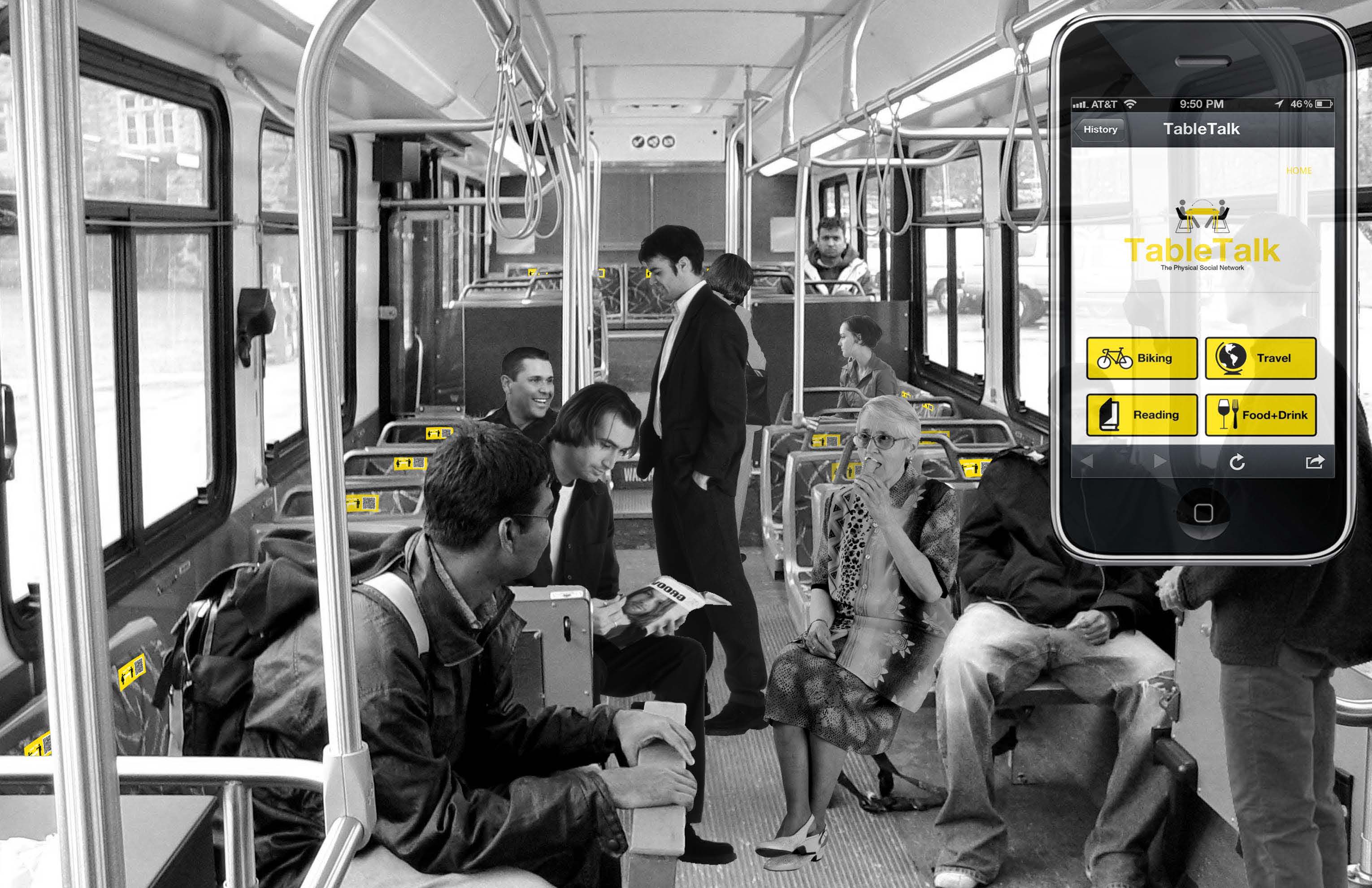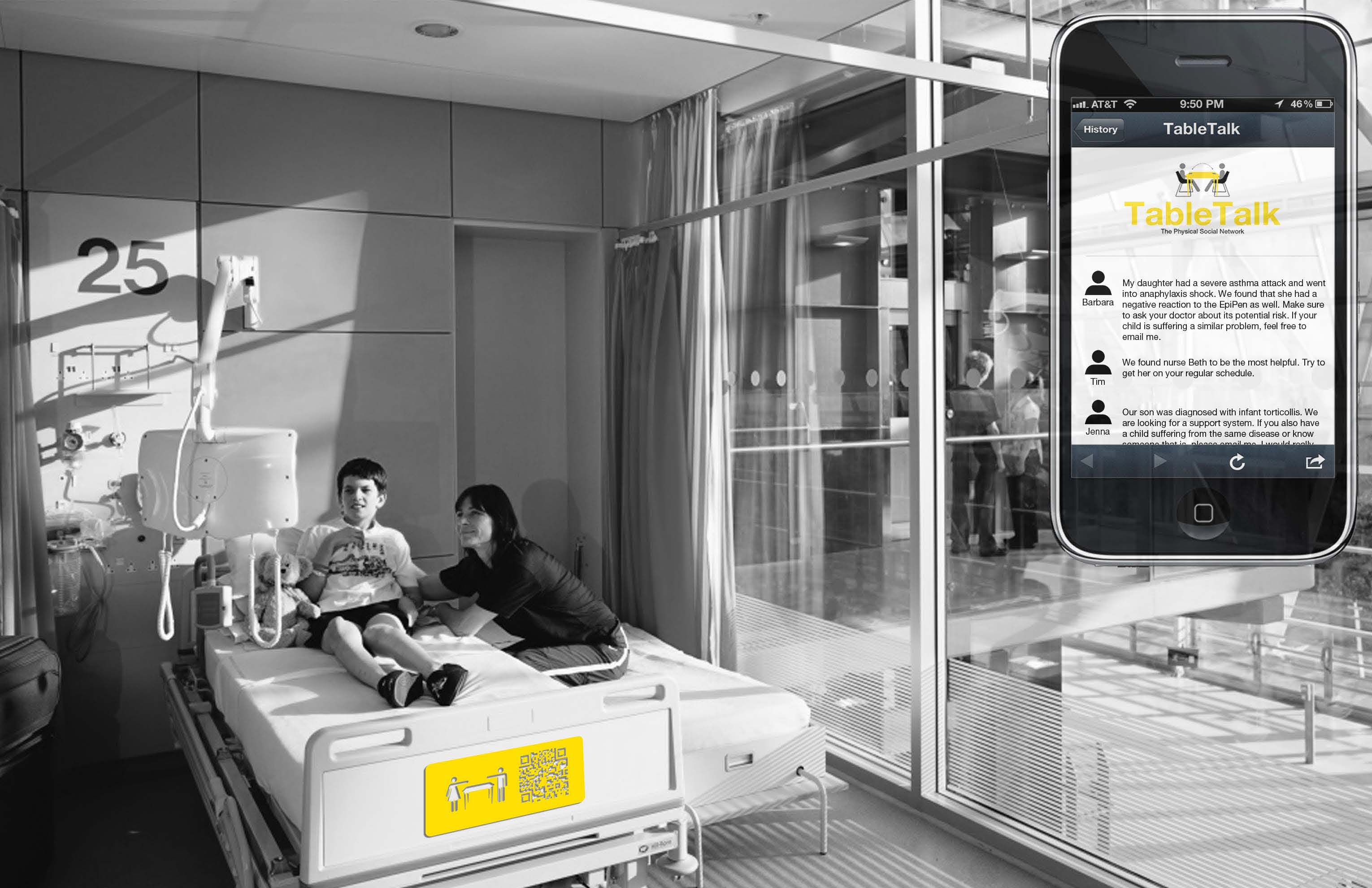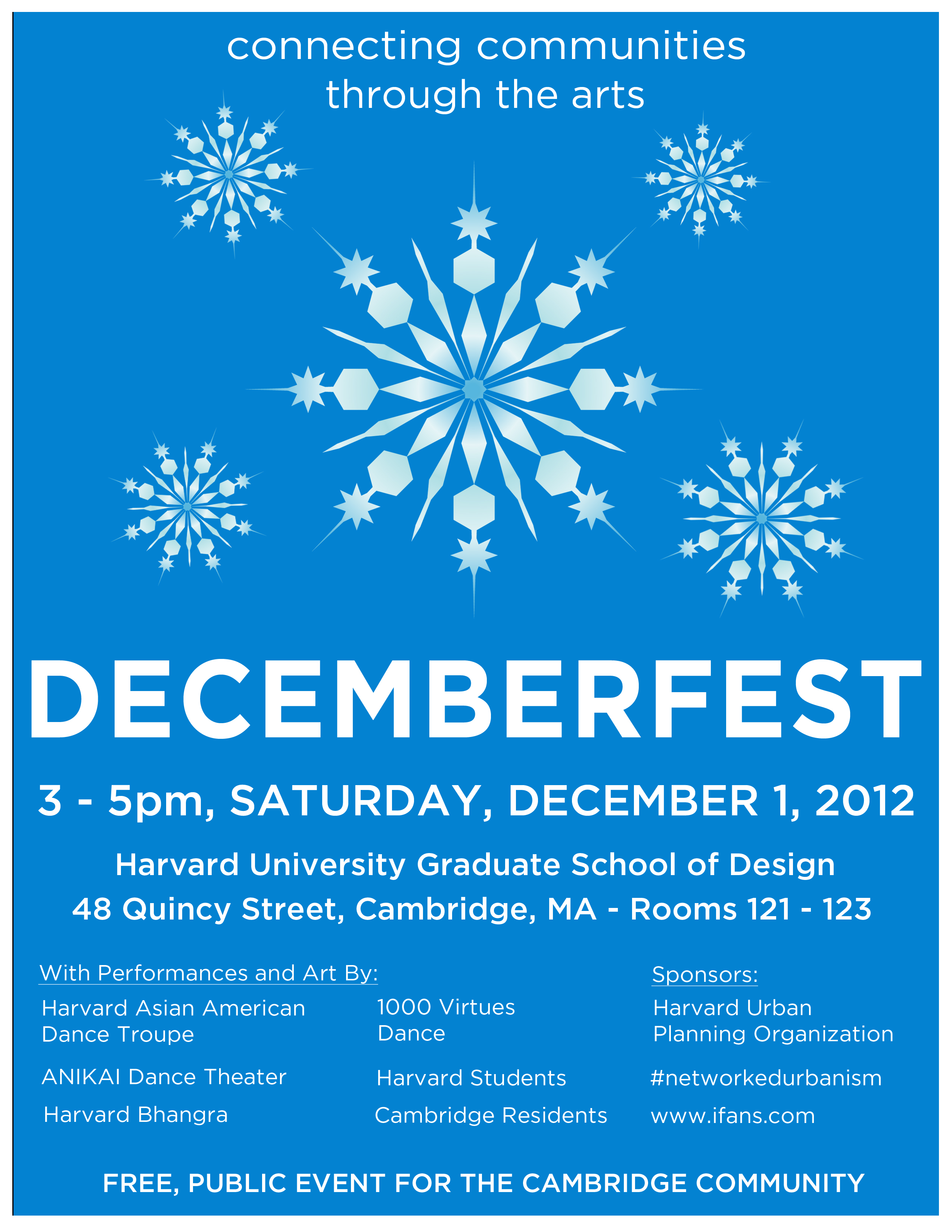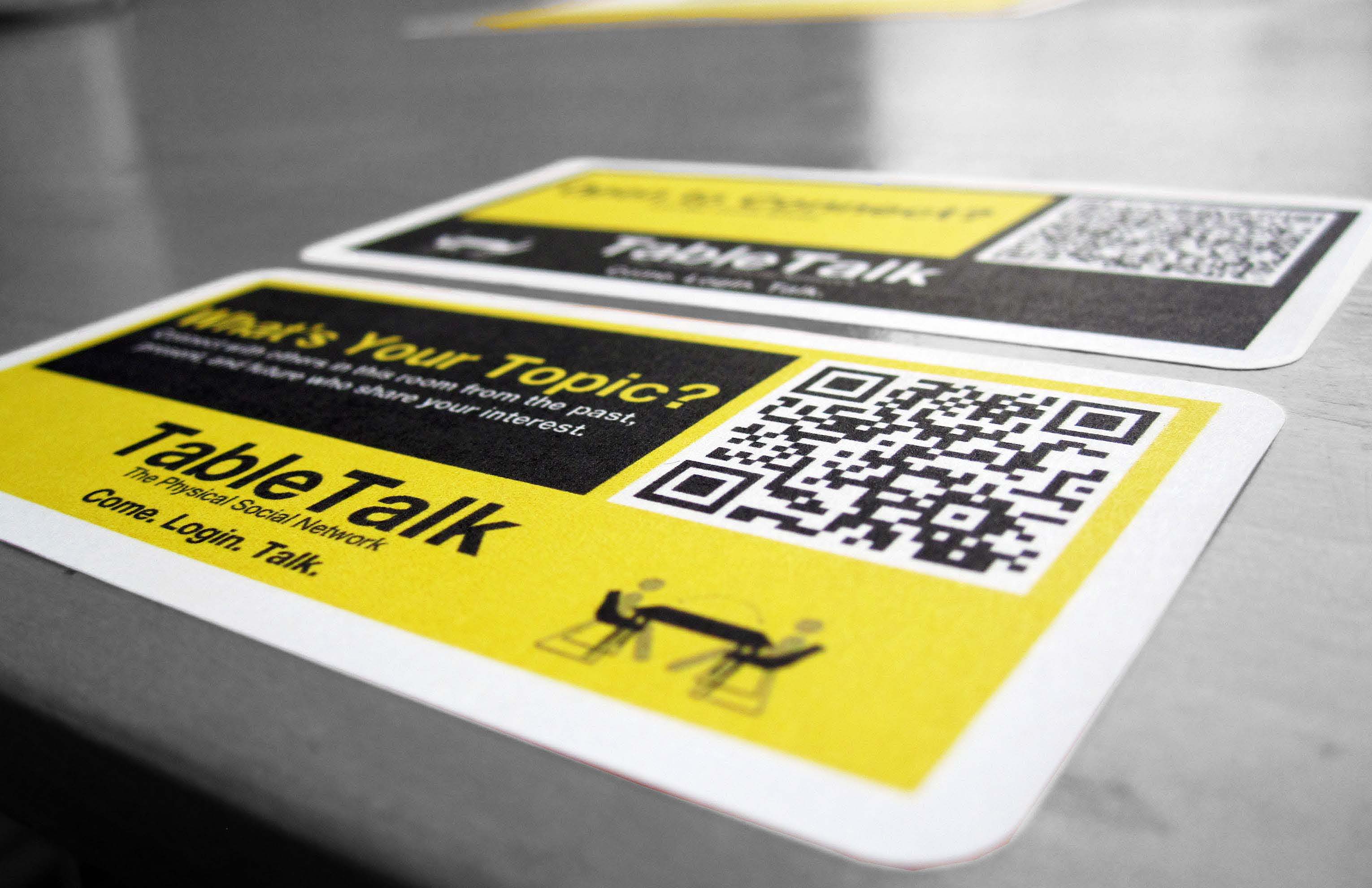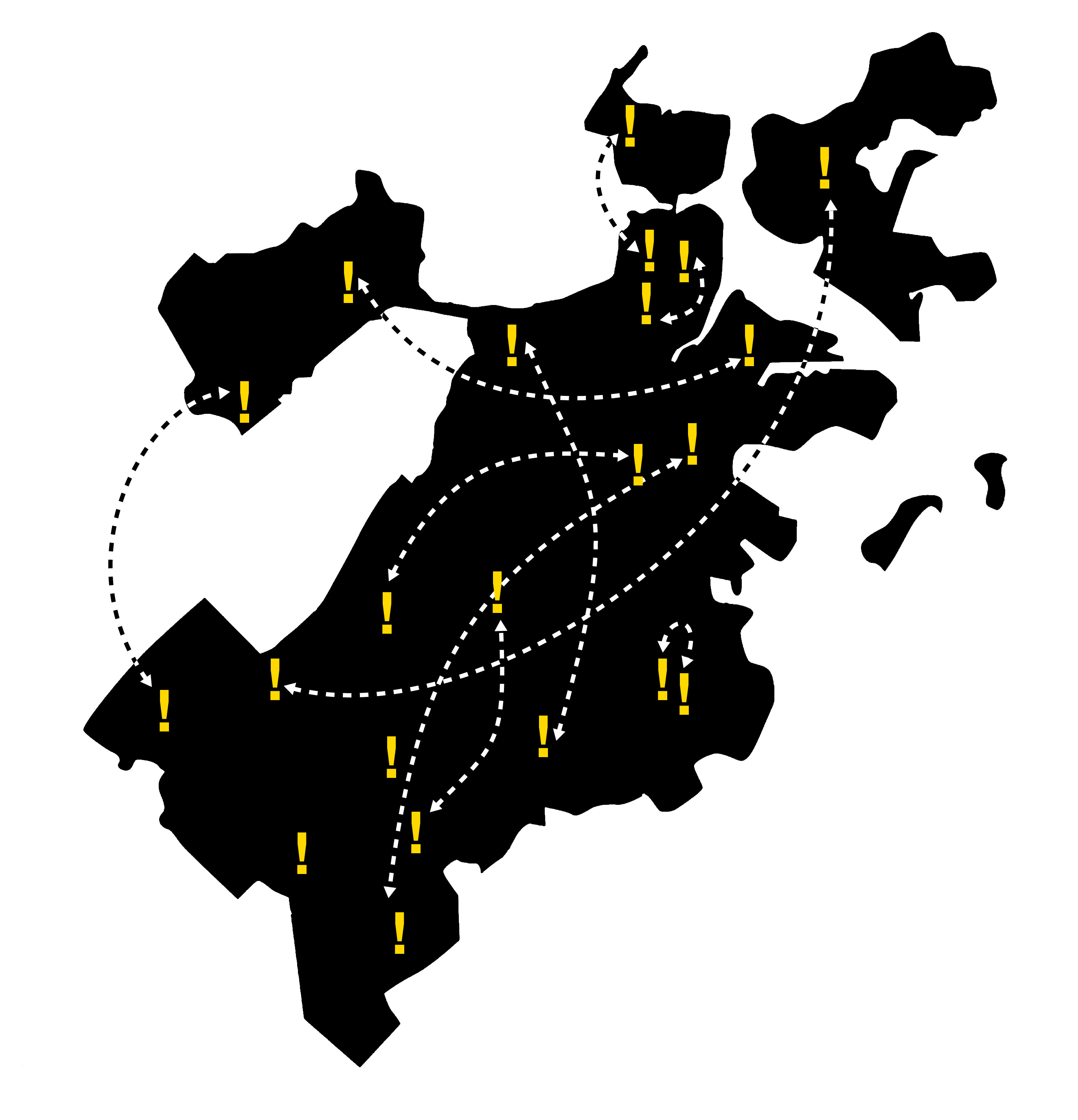Networked Urbanism
design thinking initiatives for a better urban life
apps awareness bahrain bike climate culture Death design digital donations economy education energy extreme Extreme climate funerals georeference GSD Harvard interaction Krystelle mapping market middle east mobility Network networkedurbanism nurra nurraempathy placemaking Public public space resources Responsivedesign social social market Space time time management ucjc visitor void waste water Ziyi
interaction
PROJECT STATEMENT
The problem is the future strain on Portland’s transportation infrastructure, due to the expected population growth of 1 million people by the year 2040.
Portland is expecting to become denser, and though Portland’s population has increased, the congestion of traffic has not. This is due to Portland’s predominant bike culture. Portland is America’s biking capital, with a bicycle commuter rate of 6.3% vs. the national average of 0.61%. There is already an existing system of bicycle pathways through the city of Portland, so building new infrastructure is not the way to generate more cyclists.
Our intent is to help Portland reach the modal split goal of 25% bicycle trips taken by the population inside the metro area. (more…)
We have created page accounts to go along with our app. This allows for deeper connection and to get the ball rolling on creating this app as a marketable item. Also along with the use of Facebook and Twitter as base pages, we have created a hashtag that goes along with our app and pages to further group conversations and connections.
https://www.facebook.com/bikingportland
https://twitter.com/BikingPDX
#bportland
Here is a mapped out version of the development of the Bike PDX app so far…
We constructed a survey to better understand the people of Portland.
Here is the mock-up of the base structure/design of the interface of the App.
Introduction
With the fiscal challenges and complicated regulatory processes that characterize many American cities today, communities often struggle to fully utilize the potential of public spaces to stimulate social and economic activity. This project focused on developing new strategies for activating urban public spaces by applying the existing talents and resources in the city to create temporary interventions that foster community and activity. Several interventions were part of the experiment, ending with an ephemeral intervention that mobilized the existing resources and talents to transform a space that is often underused and closed to the public into a public space for the wider Cambridge community.
Background
Many American cities today are grappling with the role, control, funding, and use of public spaces in their urban communities. Frequently, American cities face immense fiscal difficulties as municipal budgets are stretched thinly to cover the large expenses of many departments, services, and programs. Given the many demands in the municipal operating and capital budgets, it can be difficult for cities to prioritize maintaining and programming public spaces. As a result, communities may not derive the social, economic, and health benefits that activated and well-used public spaces can provide for urban societies. The servicing and programming of public spaces could be provided by non-governmental organizations and individuals, but public spaces are often operated under tight regulations and bureaucratic processes that can make it challenging for non-governmental organizations, programs, and services to use the public space for the benefit of the community. Unfortunately, these funding and regulatory issues create a challenging situation for American cities: urban communities may not be maximizing the returns of the important services and benefits that well-used, active public spaces can provide for individuals, neighborhoods, businesses, and government entities.
Process
As a student in the Master in Urban Planning program at the Graduate School of Design, Melissa Jones has been studying these issues surrounding public space in American cities today and she focused her studio work in “Networked Urbanism” on this topic. Recognizing that the complexity of these problems, Melissa’s work this semester focused on a series of experiments to test out strategies for activating public spaces. Her efforts aimed to create ephemeral interventions that activated urban spaces in novel ways and fostered interactions between community members.
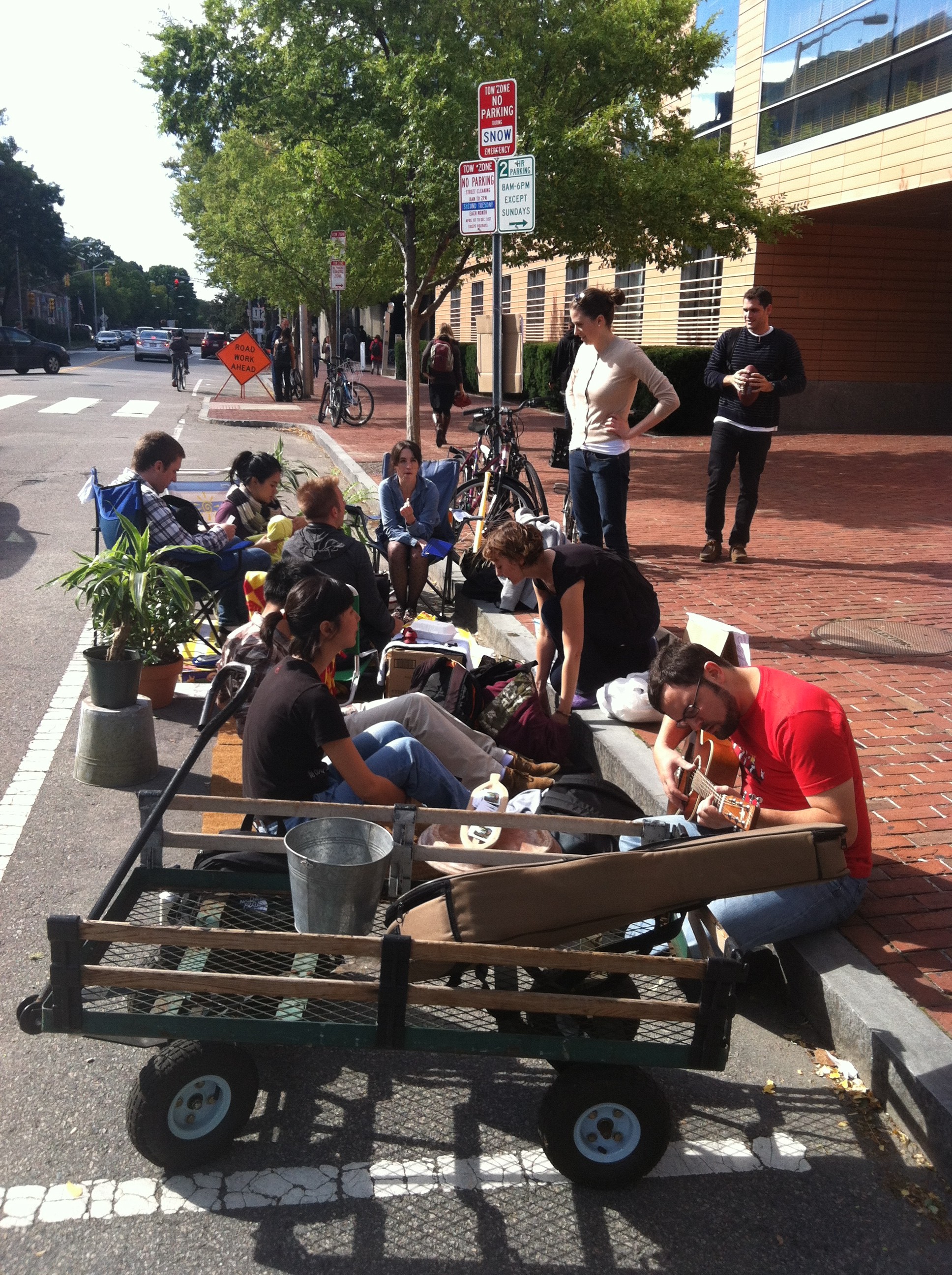 Park(ing) Day
Park(ing) Day
Melissa’s first intervention was for Park(ing) Day in Cambridge on September 21, 2012. Park(ing) Day is an international event that was started in San Francisco by Rebar, an urban design and activism group, to challenge the conventional uses of urban street space. Street parking spaces normally occupied by parked cars are converted into small parks for one day. Melissa worked with the City of Cambridge to get the necessary permits and the Harvard Urban Planning Organization to create the Graduate School of Design’s park. It was located on Cambridge Street near the GSD, and local businesses loaned plants and matted flooring materials to make the parking space into a softer and more inviting place for people. The free ice cream offered to passersby helped draw them into the park. Students, residents, and employees from the area stopped by to hang out in the park, and Park(ing) Day succeeded in activating a public space in a new way and encouraging community interaction in the public realm.
Melissa’s second project focused on new strategies for activating the Cambridge Common for families. When she took her plans to the City, however, she learned that receiving the necessary permits and approvals for temporary interventions and events in Cambridge public spaces can take up to six months. Rather than focus on an intervention several months out, Melissa decided to set aside the plans for the second project and focus on a different intervention that could be completed within the semester. Switching strategies, she approached the Harvard Common Spaces Program, which aims to activate public space on campus to foster community interactions. Melissa talked with Program staff, and learned that they had great success by anchoring ephemeral interventions to more capital-intensive, physical interventions, like seating, tables, fire pits, and an ice rink. However, as they did not have strong anchor programs in place during November through January because of weather challenges, another approach would be necessary. Nonetheless, it was very inspiring to find a formal university program that worked to address the issue of public space activation and fostering community on campus, which would serve as a template for Melissa’s own interventions.
In strategizing with Loeb Fellow and Lowell Cultural Planner LZ Nunn, Melissa developed a plan for a last intervention: to mobilize the existing resources and talents in the Cambridge and Harvard arts communities and encourage more interaction between Harvard students and Cambridge residents. The ephemeral intervention would take place on Harvard campus to activate an underused space and turn it into an active public space for an afternoon. She reached out to many community arts groups across Cambridge and Harvard and received enthusiastic responses from many dance performance groups who liked the idea of bringing diverse communities together in a new space through the arts. Melissa also received many positive responses from local visual artists who were interested in contributing works to an art gallery. Mobilizing the visual artists and dance performers to come together in a new space for an afternoon resulted in Decemberfest, an ephemeral intervention to activate the frequently closed GSD porticos with public community interactions. Sponsored by the Harvard Urban Planning Organization and supported by the Urban Planning and Design department, Decemberfest was a great success. It brought together sixty to seventy people from diverse communities, including MIT, Harvard GSD, Harvard Kennedy School, and the wider Cambridge community, breaking down the divide between the student and resident populations for the afternoon. The salsa lesson at Decemberfest was particularly successful in encouraging the direct interaction of the diverse individuals. The project succeeded in transforming an underused, private space into a public space for the afternoon through the arts and resulted in wider community interactions that the intervention had aimed to promote.
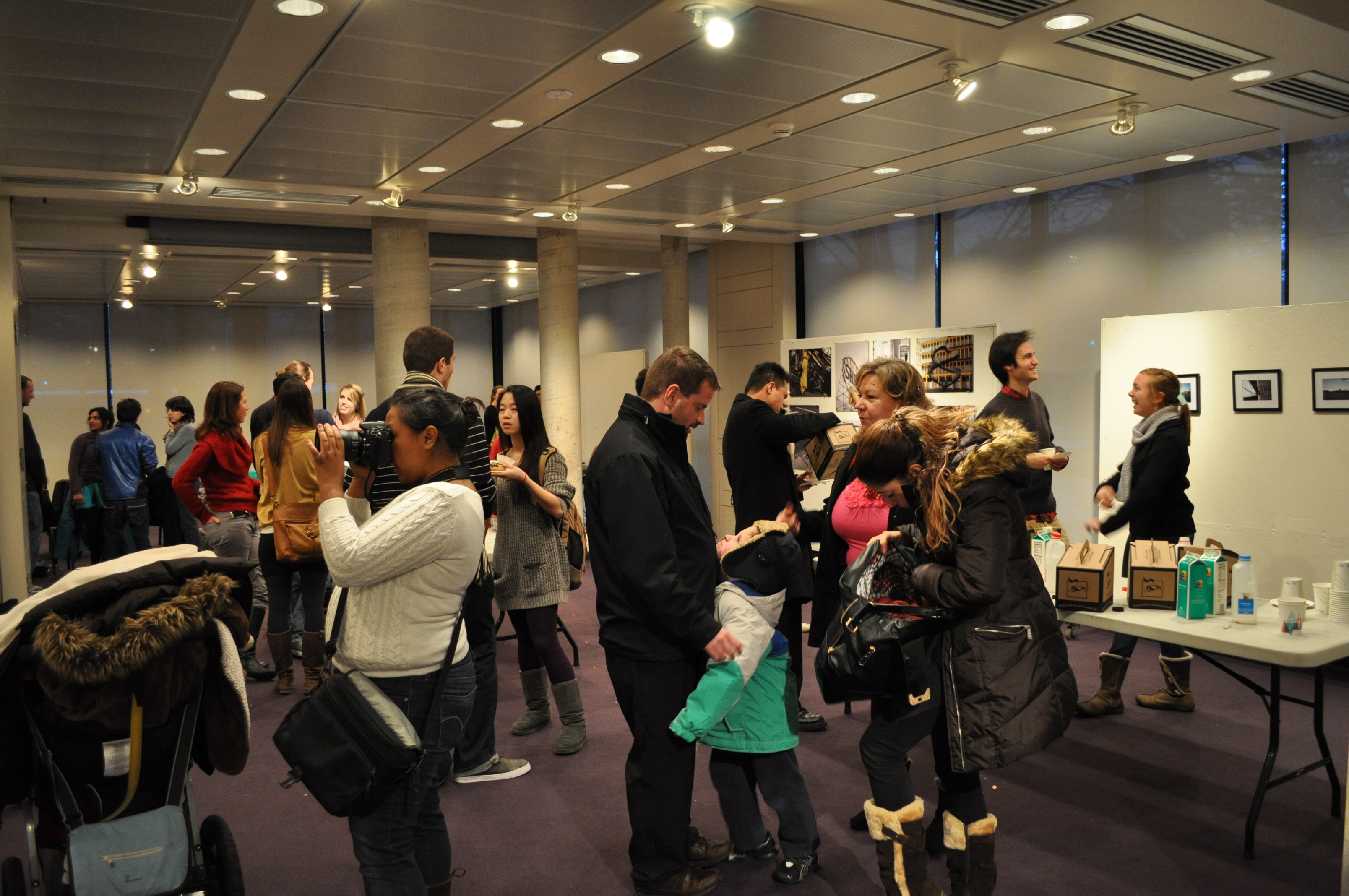
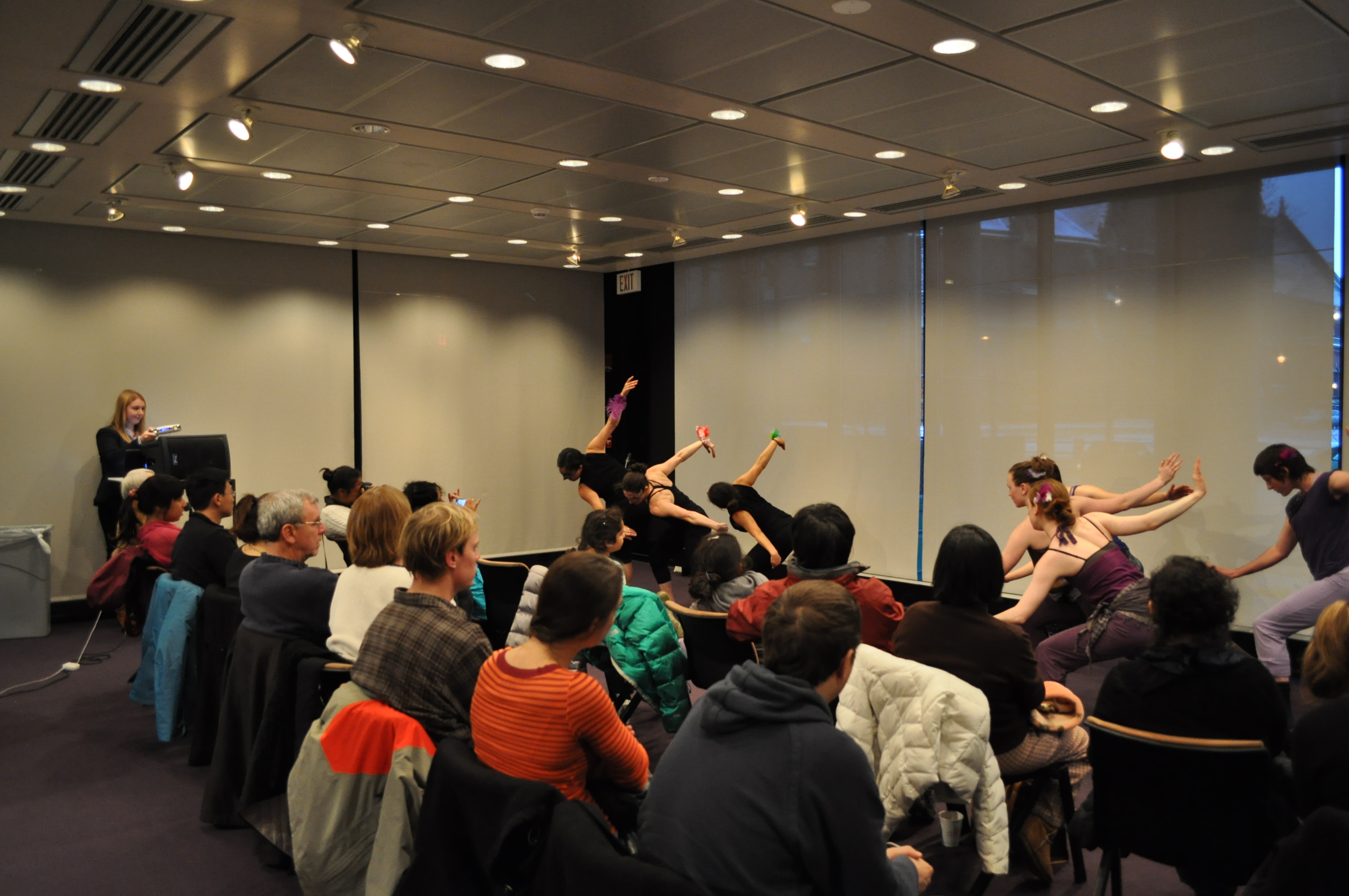
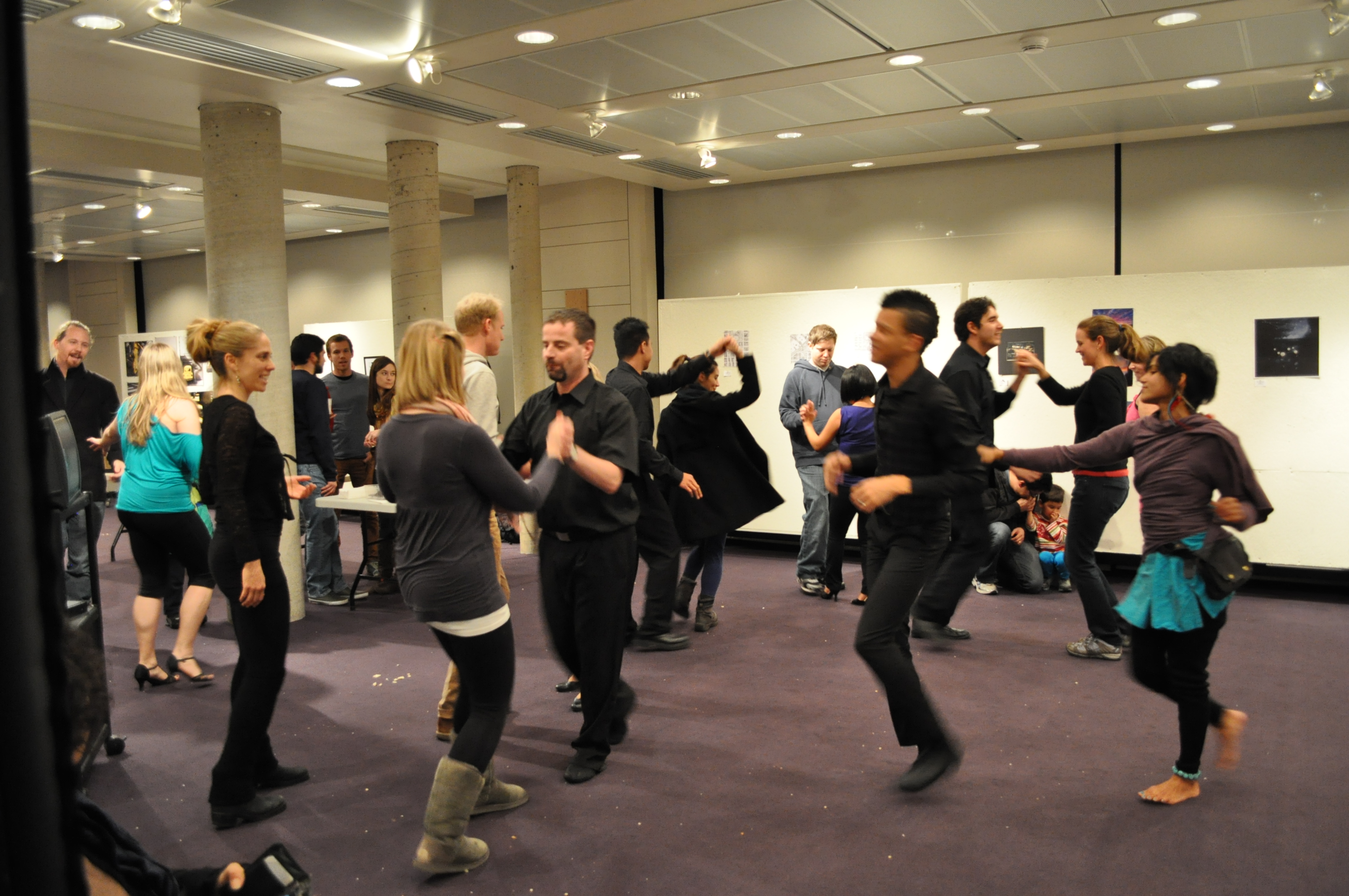
Conclusion
Ultimately, through “Networked Urbanism,” Melissa experimented with different strategies for activating urban spaces in Cambridge. Despite the regulatory roadblocks and bureaucratic difficulties that she ran into, two of the experimental interventions proved successful in changing the way urban spaces were used, challenging the conventional and traditional uses and roles those spaces played in society. The projects brought together diverse individuals from communities across Harvard and Cambridge, promoting more interactions between the student and resident population and addressing the social aspects of the “town and gown” issue in this area of the city. She had great success with coordinating and mobilizing a community’s existing resources and talents towards activating public spaces and providing new uses of urban spaces. These projects can serve as a blueprint to be employed by cities to capitalize on their existing resources and networks to ensure that public spaces are utilized to their full potential, increasing the vitality of the wider community.
Table Talk is a physical social network connecting individuals of like interests by combining the physical and digital realms of urban space. This new community typology makes formerly invisible layers of shared interest visible in the material space. By embedding personal metadata onto physical objects, a new community work space is developed connecting individuals in both real time and to past occupants; highlighting the importance of the city as place.
Looking at the history of social networking, social connections first and foremost were always spatial. With the invention of the internet, social interaction went from physical to digital and new geo-location technology begins to bring the physical back into social networking, yet only as a dot on a map. What if instead of separating our physical and virtual layers, there was a way our physical environment could become a social network?
TableTalk is the exploration of the static object with an overlaid layer of digital technology which allows the user to embed personal metadata. Each table is networked into a larger system within the room. As an individual ‘engraves’ their interests onto the table; the system is able to delineate shared layers between occupants, connecting people in real time. Once the table receives an individual’s interests, it retains a trace of that person so that connections can occur across temporalities. Based on chance occurrence of choosing the same table, individuals of shared interests can connect through the physical environment. People can leave traces of themselves on the table for the past and the future; adding a heightened importance to place.
With the increased use of the ‘in between’ place between work and home where individuals come to work independently in public, TableTalk further enhances the social quality of this space. This new typology is a place to work alongside other intellectuals, some of which may share an inherent knowledge base, and connect on mutually beneficial terms. This type of environment not only provides a work space, but starts to break social barriers through place, creating a richer way for people to connect, develop community, provide place for organizing and therefore become a tool for place making.
There are several approaches to implementing this physical social network; each incorporating a different level of technology; the first being the simplest means as an overlay onto an existing space. Using QR code stickers, a physical space can be advanced by simply overlaying a digital layer onto its existing surface. The individual can then scan the QR code using their phone and input their layers of interest to begin to connect with others in that space. The first implementation of TableTalk was an overlay in the cafeteria of Harvard’s Graduate School of Design. When a user scanned one of two QR codes on the table, they were prompted to choose one of four topics which brought them to an online message board to reply to past users or leave notes for future. The second QR code let the user leave a visible trace of themselves in the room. When this code was scanned, the user was prompted to enter his or her name which was then immediately displayed on a large plasma screen in the cafeteria. My initial hypothesis was that users would be more willing to use the less visible online message board rather than display their names in public; however I was surprised by the inverse results. More users publicly displayed their name rather than using the online message board. Many went on to further add comments and the screen became a show many would stop to watch. After a few days use, I discovered more messages were added to the online board; most of those in the topic ‘food & drink’; not so surprisingly being in a cafeteria. However, it makes me wonder that if this technology were located in a place without a specific program as this cafeteria had, would TableTalk be able to influence the program of a non-programmed space?
In a fully immersed environment, the technology would be integrated into the table itself; fully combining the digital and physical layers. For this, I designed a responsive table which is capable of absorbing user interest. Depending on the chosen topic, the table adjusts color so that the user is able to quickly look around the room and see others currently in the room with similar interests; breaking that barrier of first conversation starter. The table is also embedded with a QR code which when scanned, connects to all the others who had previously chosen that same seat with the same interest.
By infiltrating unused spaces of our communities with these responsive tables in a layout that promotes social interaction, that ‘in between’ space can begin to act as a place making tool and means for community engagement. This physical social network can begin to connect individuals within the community on deeper and more meaningful levels depending on hobbies, background, research, or need and therefore highlighting the importance of city as place.
Most recently, my efforts have been focused on mobilizing existing talents and resources in the Cambridge and Harvard communities to activate urban spaces in new ways. My studio project has culminated in a community arts event to connect the Cambridge and Harvard communities through art, dance, and food. The event is called Decemberfest, and it will take place on Saturday, Dec. 1, from 3-5pm at the GSD in Rooms 121-123. The project is supported by the Harvard Urban Planning Organization, and it will feature performances by dance groups from the Harvard and Cambridge communities, as well as art from local residents on an urban theme. The entire community is invited to this public event – hope to see you there!
TableTalk is a physical social network connecting individuals of like interests by combining the physical and digital realms of urban space. This new community typology makes formerly invisible layers of shared interest visible in material space. By embedding personal metadata onto physical objects, a new community work space is developed connecting individuals in both real time and to past occupants; highlighting the importance of the city as place.
I am currently exploring the many ways this system can be implemented; including overlay onto existing program, embedding into objects, enhancing the social environment, and designing a new typology all together.
Think Big
With little extra funding to reinvigorate public spaces in cities today, new strategies and tactics need to be developed to improve our public spaces so they better serve residents, engage community, and foster interactions. While the development of these strategies and tactics may involve high-level collaborations between many different stakeholders in the community, new ideas/methods/strategies for activating public spaces can also be developed “on the fly” by individuals taking action in the public spaces and making connections between stakeholders and organizations as they go. My goal for this studio is to become one of these individuals and hope to gradually develop larger strategies for activating public spaces and promoting stakeholder collaborations based my experiences this term.
Start Small
I decided to use the Cambridge Common as the public space to focus my efforts on this term. I spent a lot of time the last weekend observing the park and how people use it. I then brainstormed a lot of different ideas for activities and art projects that would serve different users of the park, but the feedback from our “sharing” session on Tuesday encouraged me to develop a particular goal to work towards. After meeting with staff at the Cambridge Historical Society yesterday, I developed a specific goal and brainstormed different interventions to try to meet that goal. My goal is: Capture the essence of childhood in people of all ages in the Cambridge Common.
Act Now
To try to spark the imagination, wonder, and curiosity that are essential to childhood, I’ve brainstormed a few different ideas for interventions. I’m going to start with some intervention prototypes this weekend in the Common on the small scale and see how they go, to then reassess the ideas, successes/failures/opportunities/problems and further develop the prototypes.
Past/Current/Near Future Connections include: New Urban Mechanics Lab, Cambridge Historical Society, Cambridge Art Council, Cambridge Historical Society, LZ Nunn, Ed Walker, Jim Lasko.
Think Big:
Design a physical social network in which people of similar interests, ideas, skills are connected through means of the physical environment.
Start Small:
There are currently two paths my research can take me; both of which I am excited about. I am currently pursuing both paths to see if they can soon combine into one.
1) A Physical Social Network in which a location specific object (ie. table within a cafe) is the point of connection between two people with similar interests. In this scenario, people can leave specific ‘traces’ of themselves throughout the city. You can sit at a table and see those who have sat there before you; based on individual layers. This concept begins to form new community boundaries and connections by means of our physical environment.
2) A digital submission process for New Urban Mechanics. I am currently working with the New Urban Mechanics office in developing a way to easily submit ideas, connect with those interested in similar concepts, and immediately connect someone needing a specific skill with someone who has it.
Act Now:
I am simultaneously working to conceptualize a platform for the physical social network while connecting with the New Urban Mechanics office and other companies who are attempting at connecting specific people based on interests, skills, or location. Current connections include:
- New Urban Mechanics
- OurCommonPlace.com at Harvard iLab
- USAdelante at Harvard iLab
- Active Pepper at Harvard iLab
- Ed Walker with Small Cities Movement
- Sociologist Bart Bonikowski
- Connections Group at Berkman Center for Internet & Society
-Think Big-
With growing pressure and demands on city budgets today, municipalities are facing shortages of funds for many of their departments. In particular, departments that focus on servicing and improving the public realm frequently face cuts in their annual and capital budgets. Often, this means that many urban public spaces don’t receive the attention that they need to meaningfully serve their residents. A capital project to improve a public square may be shelved until brighter days in the city’s future. Programs in the park may be cut back because there isn’t money to spend on community activities. Street furniture may slowly deteriorate as cities cut the funds dedicated to street amenities.
At the same time as funding for the public realm is frequently coming up short, public space continues to play a vital role in our cities. Public spaces cultivate community, spur economic activity, promote social cohesion, and enrich residents’ health and well-being, among many other important roles. Given this challenging fiscal climate in many cities, how can we continue to activate public spaces to foster community, connect residents to their neighborhoods and each other, and create vibrant cities in a cost effective manner? How can we sustain activated public spaces in the long term?
-Start small-
Although I have ideas about how to start tackling this problem this from the top, I am going to begin exploring answers to this question by starting bottom-up, by implementing my own public space interventions and “learning by doing.” I hope to develop many ideas and try to implement them as I can, thus allowing the process of innovation&implementation to produce outcomes, which I can then learn from – nurturing and learning from both success and failure. In the process, I hope to engage and involve local organizations and/or municipal departments to form a broader understanding of connections between organizations, residents, the city, and how collaborations can be formed to cost-effectively activate public spaces.
-Act now-
I’ve been speaking with experts in the GSD community and at the City of Boston, and I have a few more contacts I’ll be contacting soon. I’m still refining my ideas for the kinds of interventions I would like to do. I would like to implement an intervention in the back yard of Gund Hall, and I’m working with building services to try to make it happen. I also am studying the Cambridge Common space to start planning some interventions there.
1 2 Next »
